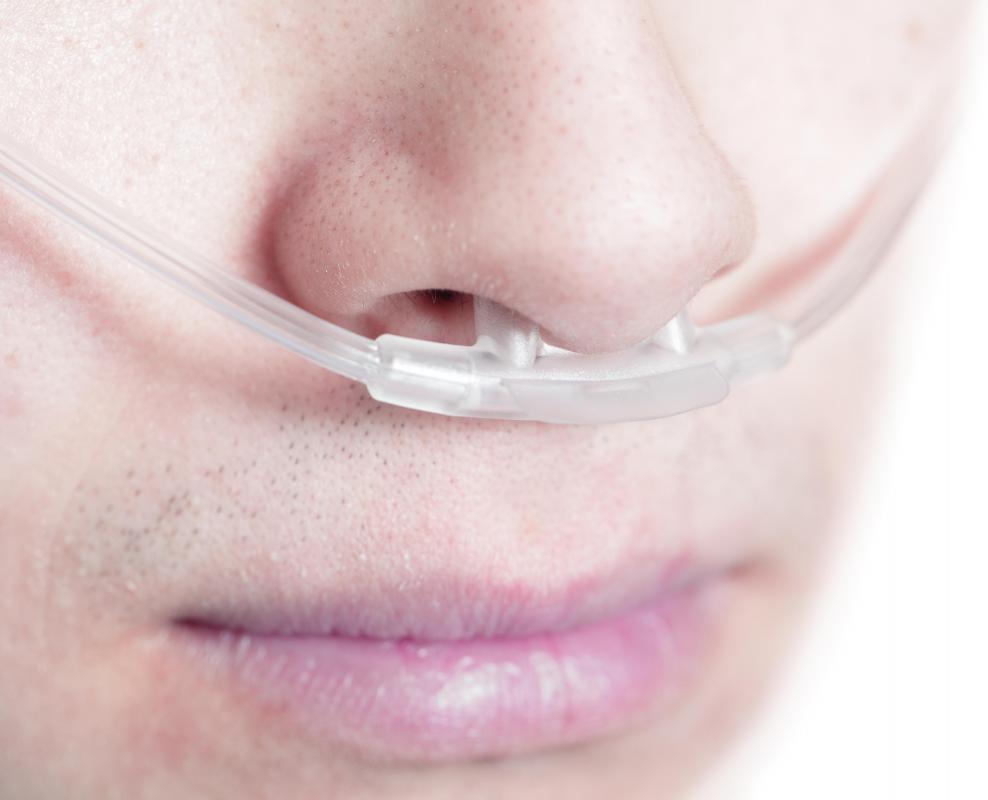At WiseGEEK, we're committed to delivering accurate, trustworthy information. Our expert-authored content is rigorously fact-checked and sourced from credible authorities. Discover how we uphold the highest standards in providing you with reliable knowledge.
What Is a Hypoxic Chamber?
A hypoxic chamber is an enclosed space that mimics higher altitude by lowering the oxygen content in the surrounding air. Athletes commonly use a hypoxic chamber to acclimate their bodies to high altitude conditions. Manufacturers create these adjustable environments in variable sizes. Individuals performing rigorous activities at high altitudes are likely to develop hypoxia, or oxygen deprivation. The physiological changes resulting from hypoxia can cause death.
Several types of hypoxic chamber are available. The chamber may be a hypoxic tent that fits over a bed, a solid framed structure encompassing a particular amount of space, or a room-sized environment. Some manufacturers create masks that replicate an oxygen-deprivation. Some of these enclosed environments have air conditioning units that eliminate the humidity in the atmosphere created by exhalation. Filters remove carbon dioxide produced from exhalation.

Depending on the size of the hypoxic chamber, individuals may sleep, perform normal daily activities, or engage in rigorous physical exercise in the environment it creates. Users gradually reduce the environmental oxygen levels in a hypoxic chamber. Many believe that decreasing the amount of oxygen gradually, over a period of days, conditions the body to function more effectively at high altitudes, where oxygen levels are low. The system adjustments may range from 0 to 25,000 feet (7,620 meters) above sea level.

The air normally contains approximately 20.9% oxygen, but oxygen deprived environments may have breathable oxygen levels as low as 12%. While in a hypoxic chamber, individuals generally monitor blood oxygen levels in the body by using a pulse/oximeter, commonly called a pulse/ox monitor. Healthy, well-oxygenated bodies typically emit a pulse/ox reading of 100%. Some athletes strive to function with readings as low as 90%.

By gradually inducing hypoxia, athletes typically hope to increase their number of red blood cells, which carry oxygen throughout the body. Many believe that by doing this, athletes reduce the possibility of experiencing hypoxia at high altitudes. People unaccustomed to high altitudes may experience hypoxia, or altitude sickness.
Symptoms of hypoxia include headaches, nausea, and difficulty breathing. Disorientation, seizures, and coma can also occur. Respiratory and cognitive symptoms generally occur secondary to edema, or swelling. In an attempt to conserve energy, hypoxic inducing factors (HIF) produce changes in the body that affect cell growth. With the exception of vascular tissue cells, the majority of cells stop growing and reproducing.

The body also generates more red blood cells, a condition known as polycythemia. Depending on the degree of polycythemia, the blood thickens and may form clots and cause cardiac symptoms. In mild cases, treating hypoxia usually involves descending to lower altitudes containing more oxygen. Individuals experiencing serious symptoms require diuretics, analgesics, and oxygen therapy.
AS FEATURED ON:
AS FEATURED ON:














Discuss this Article
Post your comments